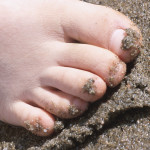Would you like to get pain relief without the side effects from medication? You can, with a simple meditation practice.
Scientists have been studying Zen monks to learn how meditation helps them cope with both chronic and occasional pain. While some of their accomplishments depend on their faith, many of their techniques can be used by anyone. Whether or not you already have a meditation practice, the suggestions below can help you get relief from pain.
Tools for Meditation
- Appreciate the mind-body connection. There’s a growing understanding that our health depends on a wide range of factors. Our mind and body interact closely. The pain we experience due to physical conditions such as arthritis also affects us emotionally.
- Reduce apprehension. Your reaction to pain can become exaggerated if you anticipate that it’s going to occur. Fear of pain is a good thing when it helps you avoid dangerous situations. It’s less helpful if you dwell on how your back will keep hurting. Mindfulness meditation helps you live in the present moment and take a break from worries about the future.
- Manage anxiety. Studies show that experienced meditators feel pain but experience less emotional impact. Even beginners can use meditation as a useful distraction. With practice, you can become more skilled at noticing the affected body part but declining to get upset about it. You may be able to notice the sensation of pain without judging it as unpleasant.
- Fight depression. Depression is known to make pain worse. When meditation helps you to feel happier and more peaceful, it’s also giving you greater protection from all kinds of afflictions.
- Loosen up. Many people feel some tension around an injured body part. If you’re nursing a stiff neck, you can focus on relaxing the area and opening it up. Imagine that your breath is flowing across the muscles, where it warms and heals them.
- Engage the pain. Pain may command all of your attention when it becomes severe. In such cases, trying to resist it may just make things worse. Some patients find relief by taking an active role in rating the relative intensity of their symptoms or observing how they increase and decrease over time.
- Get an early start. It’s a lot more challenging to learn to meditate when you’re in the middle of recovering from back surgery. By starting your practice in advance, you’ll be better prepared to cope with medical issues or the common aches that come with aging.
When You’re Not In Meditation
- Understand the relevance of meditation breaks: You’ll probably spend most of your life away from the meditation cushion. By learning to access the states of mind you attain while meditating, you can take advantage of those benefits anytime you want.
- Use pain as a cue. Even if you need to keep working when a headache hits, you can guide yourself with constructive reminders about how to deal with it. Use everyday discomforts to check in with yourself and see if anxiety and apprehension are building up.
- Guard against depression. Depression can strike anybody, but you can lower your risks. A healthy lifestyle and positive attitude can make it easier to stay on track.
- Reduce other sources of stress. Living with chronic pain can take a heavy emotional toll. If possible, build a strong support network and avoid taking on too many obligations.
- Talk with your doctor. If symptoms of pain continue, talk with your doctor about other available methods of treatment. Fortunately, meditation can be used to complement conventional approaches.
Meditation is an affordable and effective method for treating physical and emotional suffering without harmful side effects. Your skills will improve with practice so you can spend less time worrying about pain and more time enjoying life.






Leave a Reply
You must be logged in to post a comment.